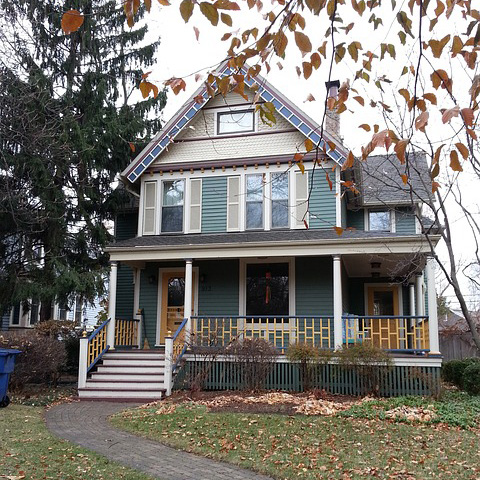Fall is here, the time of year when outdoor insects and rodents are looking for a warm place to spend the winter. Chances are your home will be targeted. Are you ready to fend off an infestation? The following tips can help to prevent unwanted pests from invading your house and how to identify signs that they have already taken shelter for the winter.
Inspect your home’s foundation
When summer starts to wind down, take a walk around the base of your home and look for signs of infestation. Small openings the width of a pencil can allow mice, voles, and other rodents of similar size to enter your home in search of warmth. Small rodents sometimes make nests between the floors or behind the walls of a house. These creatures may be hard to find indoors except for droppings that you will see and possible faint scratching you may hear. When inspecting your home’s foundation, check for signs of recent rodent activity, like burrowing in the mulch or soil nearby. Rodents like to build nests close to food sources, so keep garbage and pet food away from the base of your home. Remember that even just a pair of mice can breed up to a hundred mice within a matter of months.
Check the windows
Window wells and ledges are inviting to many kinds of insects looking for shelter from the impending cold weather. They will squeeze through tiny screen openings or deteriorating wooden frames to make their way inside the home where they can quickly establish nests or colonies. Flying insects sometimes build hives in or near window areas, for example, behind shutters or under overhangs during the warmer months. When it turns cold, those that survive begin looking for nearby entry points into a home or shed.
Examine the roof and eaves
Insects or animals that have nested under roof tiles or within the gutters during the summer have close proximity to the house when they began trying to come indoors for the winter. If you are unable to get on your roof to check these areas, have a professional do it for you. Sometimes it can be easy to follow the trail of nesting creatures on the roof or adjoining structures as they make their move indoors into the attic or within the walls before the home’s residents are able to detect their presence.
Keep an eye on nearby trees and shrubs
Look closely at trees and shrubs that are situated close to your home to see if there are any noticeable nests. Chances are, any rodents or insects that were inhabiting those areas are long gone or will not bother your home. However, some may try to find an entry point to your house if their summer nesting areas are close by. Additionally, it is a good idea to check your mulched areas, flowerbeds, and other landscaped areas of the lawn where bugs and rodents like to nest or hunt for food.
Look at your porch, patio, and shed
Outdoor areas like out buildings are welcoming to bugs and wildlife that are trying to escape cold temperatures. Sheds and garages are especially inviting to unwanted creatures. Inspect those areas carefully to see if you have unwanted guests. Use a flashlight to look under your porch for signs that a skunk, raccoon, or squirrels may have taken up residence. It is important to take care of these invaders as soon as possible before they damage your property or burrow into your home.
Many homeowners are comfortable handling issues like these. However, others lack the experience or knowledge to get rid of pests effectively. If you have questions or need professional exterminator help, give ZAP Pest Control a call; with significant pest control experience, ZAP will be glad to help with this type of issue to keep your home safe from unwanted intruders from your yard and surrounding areas.
Do an interior inspection
Walk around the inside of your basement and look for signs of pests. Check for droppings and specks indicating their presence. Listen for noises in the wall or structural areas, then do the same with your attic. Take a flashlight to search the nooks and crannies in case there are wasps, hornets, bees, or other insects that may be building nests and damaging your walls. Also, look for potential nesting areas of mice and other small animals.
If you are concerned about common pests such as spiders, silverfish, or bedbugs, do a thorough inspection of areas where these creatures are likely to be found. This typically includes for bedbugs your beds, of course, along with bed linens, draperies, and carpets. Bedbugs hide during the day in mattress creases or bed frames, and then come out at night to eat. You will need to look carefully for signs of them, including specks of blood from their victims and tiny fecal droppings. Spiders are found in corners, on ceilings, and in areas that are relatively undisturbed. However, they can be spotted in other places as well, so look for areas that seem to have a more than usual number of spiders. Ants sometimes burrow into the wood of your home, or they may build nests from a variety of construction materials.
Always remember, we are here to help. Please don’t hesitate to call our friendly staff if you need professional help zapping your pests.

